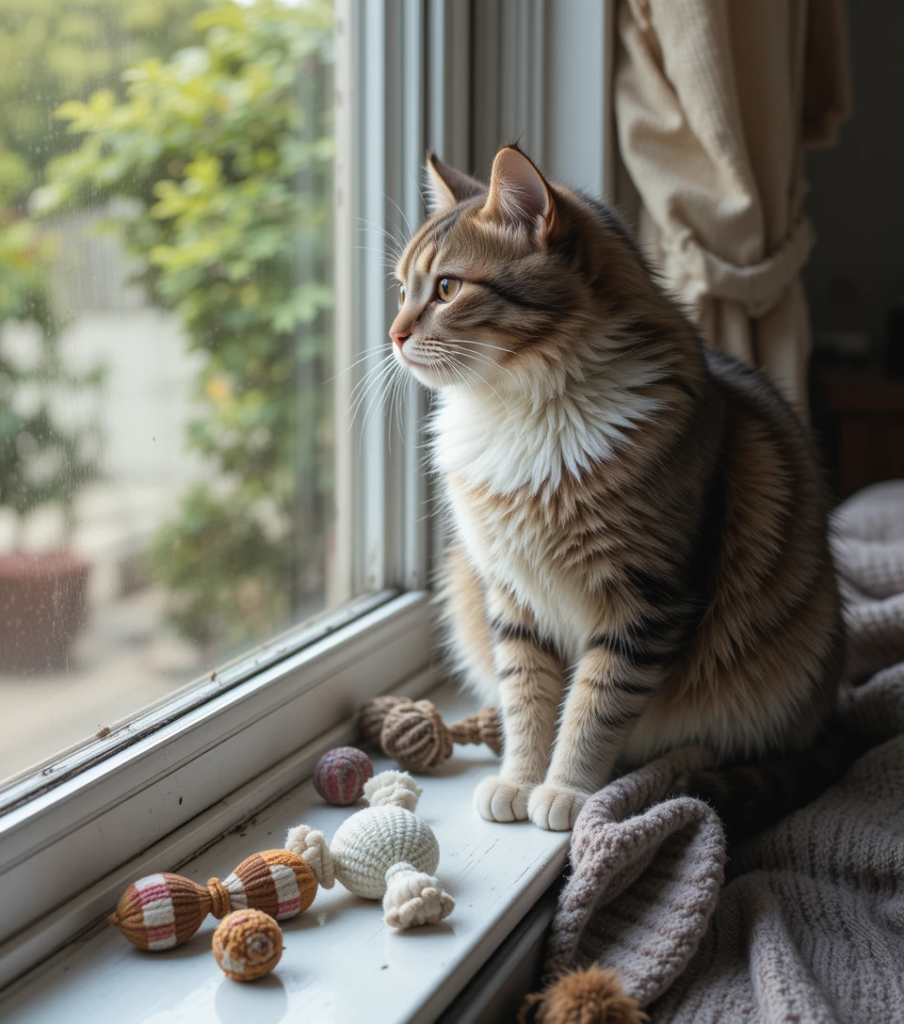Introduction: Why It’s Normal to Worry — But Don’t Panic
Bringing a new cat into your home is exciting, but if you’re worried about how your current cat will react — you’re not alone. Many cat owners feel anxious about introducing a second feline. Will they fight? Will your resident cat feel replaced? Will it ever be peaceful?
Don’t panic! With time, patience, and the right approach, most cats can learn to coexist — and sometimes even become best friends. This article will walk you through what to expect, how long it typically takes for cats to adjust, and how to encourage a smooth transition.
Understanding Cat Behavior: Why Are Cats So Sensitive to Change?

Cats are creatures of habit. They’re highly territorial and feel safest in environments they can control. A new cat represents a major disruption to your resident cat’s perceived space, safety, and routine.
Here’s why cats may react strongly:
- Territorial Instinct: Your cat sees the home as its domain.
- Scent Identity: Cats rely heavily on smell; a new scent can feel like an intrusion.
- Control & Stress: Changes in their environment can cause anxiety.
Recognizing this can help you be more compassionate and patient throughout the process.
The Typical Adjustment Timeline: What to Expect
Every cat is different, but here’s a general breakdown of what the adjustment period may look like:
🗓 Week 1: Curiosity & Separation
- Keep cats separated.
- Use scent swapping (rub a cloth on each cat and leave it in the other’s space).
- Expect curiosity, sniffing under doors, and occasional hissing.
🗓 Week 2–3: Visual Introduction
- Start supervised visual introductions through a baby gate or cracked door.
- Expect cautious behavior, staring, some hissing or growling.
🗓 Week 3–4: Supervised Interactions
- Allow short, closely monitored time together.
- Use play or treats to create positive associations.
🗓 1–2 Months: Coexistence
- Cats begin to tolerate, then ignore, and potentially accept each other.
- Mutual grooming, sleeping near each other, or playing may occur.
⚠️ Some cats may take longer — up to 3–6 months. That’s normal.
Step-by-Step Guide: How to Introduce a New Cat Safely
- Create Separate Spaces
Let the new cat settle in a different room with their own litter box, food, and toys. - Swap Scents First
Rub a towel or sock on one cat and leave it with the other. Do this daily. - Feed Near the Door
Feed both cats on opposite sides of the door to build positive associations. - Gradual Visual Exposure
Use a baby gate or slightly open door to allow safe viewing. - Supervised Meetings
Start with a few minutes, then gradually extend the time. Don’t force interaction. - Watch Body Language
Look for calm tails, relaxed ears, and slow blinking. - Go Slow
If aggression occurs, return to previous steps and go slower.
Signs Your Cats Are Adjusting (or Not)

✅ Positive Signs:
- Sniffing without hissing
- Playing or eating near each other
- Grooming or sleeping close by
❌ Warning Signs:
- Ongoing growling or hissing
- One cat hiding constantly
- Chasing or attacking
- Guarding food or litter boxes
If signs of conflict persist, don’t ignore them — they may require professional help.
Mistakes to Avoid During the Adjustment Period
🚫 Rushing the introduction
Skipping steps leads to stress and possible fights.
🚫 Letting cats “fight it out”
This creates fear, not friendship.
🚫 Punishing aggressive behavior
Yelling or spraying water only increases fear and tension.
🚫 Lack of resources
Ensure each cat has their own litter box, food/water bowls, and resting spots.
Tools That Help: Pheromones, Toys, and Space Solutions
- Feliway Diffusers: Calming pheromones that reduce stress.
- Interactive Toys: Play therapy reduces tension and channels energy.
- Cat Trees & Shelves: Vertical space lets cats claim their own “zones.”
- Multiple Litter Boxes: Follow the “one per cat + one extra” rule.
- Treat Trails: Leave treats to encourage following and curiosity.
When Things Go Wrong: What to Do If Cats Don’t Get Along
If weeks go by and there’s no progress — or worse, aggression increases — it may be time to:
- Reintroduce them slowly from scratch.
- Use calming aids more consistently.
- Work with a feline behaviorist for a customized plan.
- Consult a vet to rule out health-related causes for aggression.
How to Foster Long-Term Harmony Between Cats
- Keep routines consistent for both cats.
- Feed them in separate bowls but near each other to encourage trust.
- Engage them in joint play sessions with wand toys.
- Give equal affection and attention to prevent jealousy.
- Maintain a calm home environment to reduce anxiety.
Final Thoughts: Patience Is Key, and Peace Is Possible
It’s completely normal to feel anxious about bringing a new cat into the mix, but with time, patience, and the right strategy, most cats learn to live peacefully — and some even form lifelong bonds. Don’t panic if progress feels slow. You’re laying the foundation for a calmer, happier multi-cat household.
🙋♀️ 10 FAQs: Cat Adjustment Period
1. How long does it usually take cats to get along?
It can take anywhere from a few weeks to several months, depending on their personalities and the introduction process.
2. Can some cats never adjust to a new cat?
Yes, some cats may never bond but can still live peacefully with proper management and space.
3. What signs show my cat is stressed by the new cat?
Hiding, growling, refusing to eat, and avoiding their usual spots can all indicate stress.
4. Is hissing normal during the introduction?
Yes, hissing is normal and often part of setting boundaries. It usually lessens over time.
5. How can I help my cats bond faster?
Use scent swapping, interactive play, and feed them near each other to create positive associations.
6. Should I separate the cats at night?
Yes, during the early stages of introduction, keeping them separated at night is recommended.
7. Do older cats have more trouble adjusting?
Often yes, older cats may be more set in their ways and need more time to adapt.
8. What if one cat keeps hiding all the time?
Respect their space, offer hiding spots, and reintroduce more slowly.
9. Can neutering/spaying help cats get along?
Absolutely. Hormones can play a major role in aggression, so spayed/neutered cats tend to adjust better.
10. When should I call a veterinarian or behaviorist?
If aggression escalates, if a cat stops eating, or if no improvement happens in 6–8 weeks, consult a professional.

